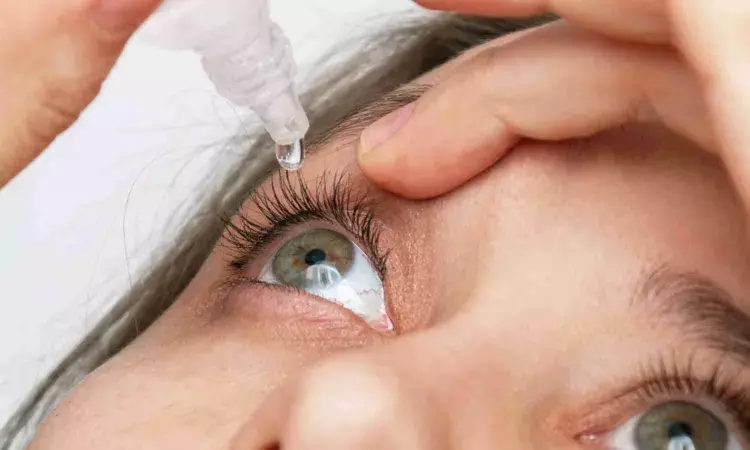- Home
- Medical news & Guidelines
- Anesthesiology
- Cardiology and CTVS
- Critical Care
- Dentistry
- Dermatology
- Diabetes and Endocrinology
- ENT
- Gastroenterology
- Medicine
- Nephrology
- Neurology
- Obstretics-Gynaecology
- Oncology
- Ophthalmology
- Orthopaedics
- Pediatrics-Neonatology
- Psychiatry
- Pulmonology
- Radiology
- Surgery
- Urology
- Laboratory Medicine
- Diet
- Nursing
- Paramedical
- Physiotherapy
- Health news
- Fact Check
- Bone Health Fact Check
- Brain Health Fact Check
- Cancer Related Fact Check
- Child Care Fact Check
- Dental and oral health fact check
- Diabetes and metabolic health fact check
- Diet and Nutrition Fact Check
- Eye and ENT Care Fact Check
- Fitness fact check
- Gut health fact check
- Heart health fact check
- Kidney health fact check
- Medical education fact check
- Men's health fact check
- Respiratory fact check
- Skin and hair care fact check
- Vaccine and Immunization fact check
- Women's health fact check
- AYUSH
- State News
- Andaman and Nicobar Islands
- Andhra Pradesh
- Arunachal Pradesh
- Assam
- Bihar
- Chandigarh
- Chattisgarh
- Dadra and Nagar Haveli
- Daman and Diu
- Delhi
- Goa
- Gujarat
- Haryana
- Himachal Pradesh
- Jammu & Kashmir
- Jharkhand
- Karnataka
- Kerala
- Ladakh
- Lakshadweep
- Madhya Pradesh
- Maharashtra
- Manipur
- Meghalaya
- Mizoram
- Nagaland
- Odisha
- Puducherry
- Punjab
- Rajasthan
- Sikkim
- Tamil Nadu
- Telangana
- Tripura
- Uttar Pradesh
- Uttrakhand
- West Bengal
- Medical Education
- Industry
Two sessions of low-level light therapy may decrease ocular pain and dry eye disease symptoms after cataract: BMJ

A new study published in the British Journal of Ophthalmology found that low-level light therapy (LLLT) can dramatically lessen symptoms of dry eyes after cataract surgery. Despite the growing evidence that patients with pre-existing dry eye disease (DED) must optimize their ocular surface prior to cataract surgery in order to achieve the intended postoperative outcomes, it is still worth to investigate the prophylactic treatment of healthy patients who were undergoing surgery in order to prevent iatrogenic DED. Low-level laser therapy is a rapidly emerging technique used to treat a wide range of diseases requiring healing stimulation, pain and inflammation reduction, and function restoration. Therefore, Giuseppe Giannaccare and team carried out this study in order to assess the effectiveness of low-level light treatment in iatrogenic dry eye disease.
This prospective, interventional, randomized, controlled, and double-masked randomized patients 1:1 to receive either sham treatment (LLLT with a power output less than 30%) or real light therapy. Two therapy sessions were performed on the patients where one was 7±2 day prior to cataract surgery (T0) and one was 7±2 day following (T1). The Ocular Surface Disease Index (OSDI) questionnaire, tear meniscus height, non-invasive break-up time (NIBUT), meibomian gland loss (MGL) and redness score were among the outcome markers assessed 30±4 days following surgery (T2).
The study found that 131 patients (70 men and 61 women, mean age 73.53±7.29 years) were randomly assigned to undergo LLLT (n = 73) or sham therapy (n = 80) and successfully completed the trial on a regular basis. At T1 and T2, the OSDI scores of patients treated with LLLT were significantly lower than those of controls. Additionally, there were higher NIBUT values at T2 and lower MGL Meiboscore values at T1. The patients treated with LLLT showed substantially higher NIBUT values at T2 when compared with T0 and considerably lower OSDI scores at T2 compared with controls.
This study demonstrates that after cataract surgery, low-level light treatment, or LLLT, can greatly reduce the symptoms of dry eyes. When comparing LLLT recipients before and after surgery to controls, it was evident that they had improved non-invasive break-up time values and significantly lower Ocular Surface Disease Index scores. Following surgery, the patients who received LLLT in particular reported decreased ocular pain and better tear film stability.
Source:
Giannaccare, G., Rossi, C., Borselli, M., Carnovale Scalzo, G., Scalia, G., Pietropaolo, R., Fratto, B., Pellegrini, M., Yu, A. C., & Scorcia, V. (2023). Outcomes of low-level light therapy before and after cataract surgery for the prophylaxis of postoperative dry eye: a prospective randomised double-masked controlled clinical trial. In British Journal of Ophthalmology (Vol. 108, Issue 8, pp. 1172–1176). BMJ. https://doi.org/10.1136/bjo-2023-323920
Neuroscience Masters graduate
Jacinthlyn Sylvia, a Neuroscience Master's graduate from Chennai has worked extensively in deciphering the neurobiology of cognition and motor control in aging. She also has spread-out exposure to Neurosurgery from her Bachelor’s. She is currently involved in active Neuro-Oncology research. She is an upcoming neuroscientist with a fiery passion for writing. Her news cover at Medical Dialogues feature recent discoveries and updates from the healthcare and biomedical research fields. She can be reached at editorial@medicaldialogues.in
Dr Kamal Kant Kohli-MBBS, DTCD- a chest specialist with more than 30 years of practice and a flair for writing clinical articles, Dr Kamal Kant Kohli joined Medical Dialogues as a Chief Editor of Medical News. Besides writing articles, as an editor, he proofreads and verifies all the medical content published on Medical Dialogues including those coming from journals, studies,medical conferences,guidelines etc. Email: drkohli@medicaldialogues.in. Contact no. 011-43720751


